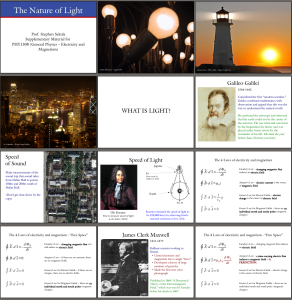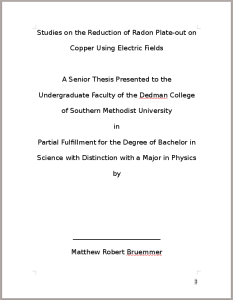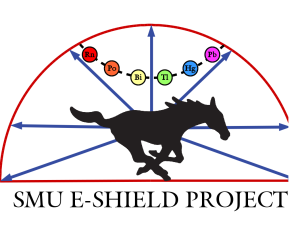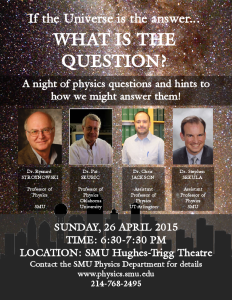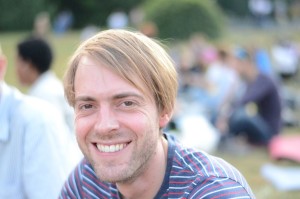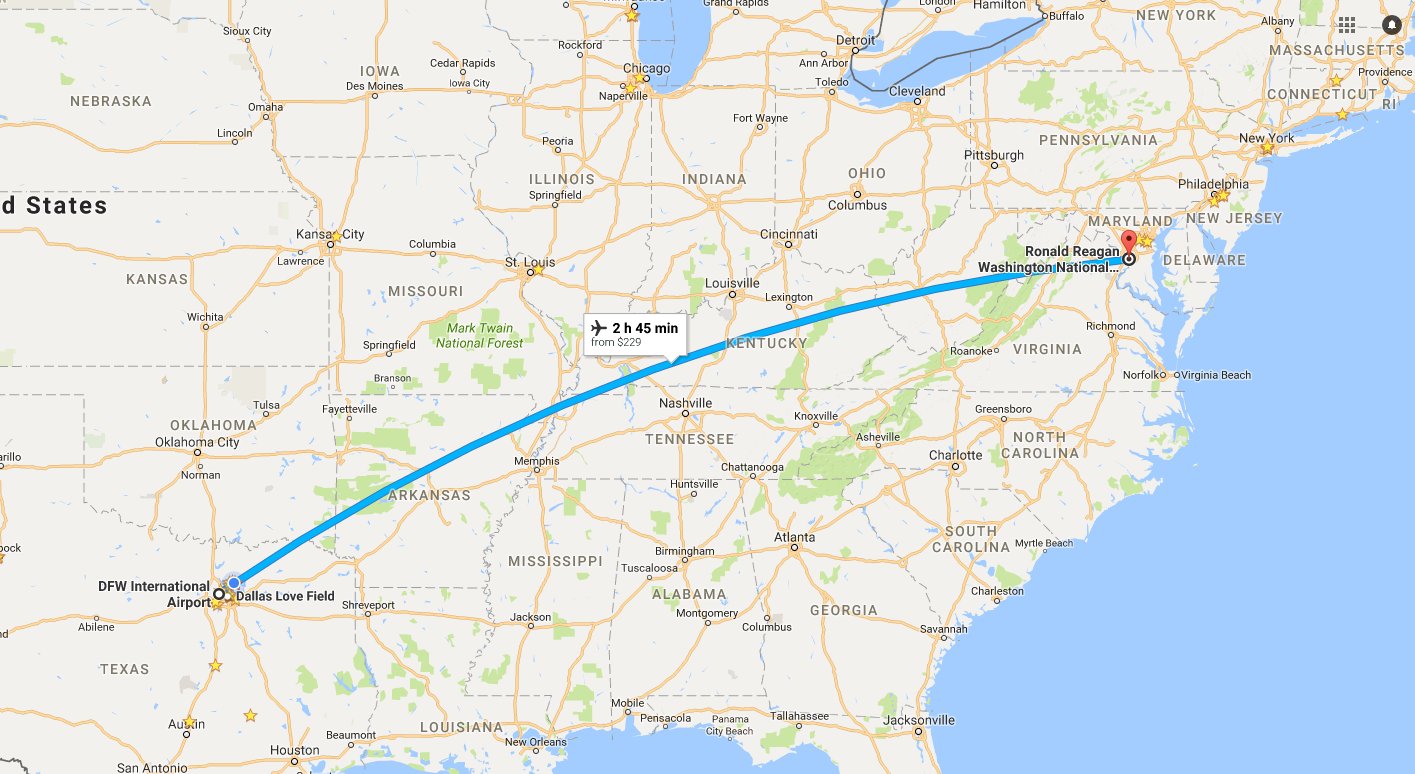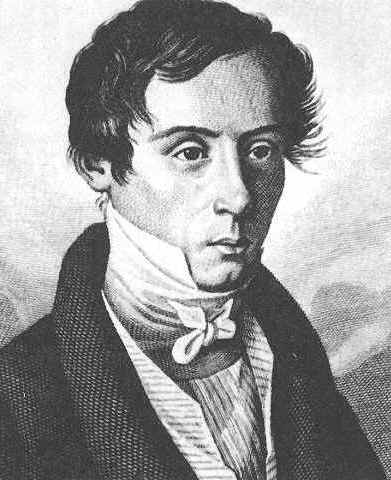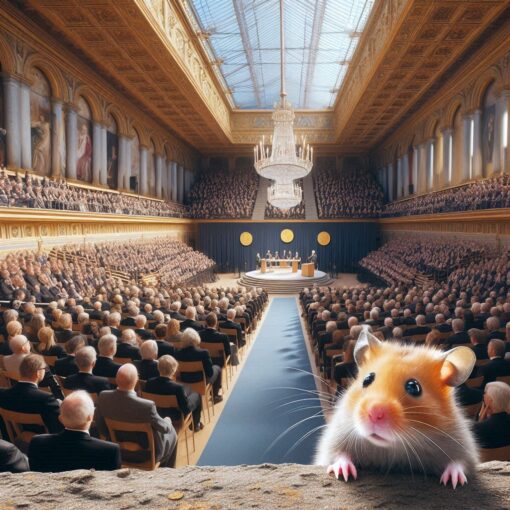
It’s time for another episode of Steve traveling backward in time! It’s my week in review, another look back at the week that was in my little web log. This week was one of mixed emotions. I’ve begun the last formal topic in my introductory physics course (optics); I received the first draft of my student’s senior thesis this week; I have started final planning for the DIS2015 public lecture on April 26, seeking input from SMU’s excellent communications staff; we did a test with the E-Shield setup to determine minimum safe distances between the 35kV anode and ground; and I learned of the sudden and untimely death of a colleague of mine. It was a mixed week indeed.
 My introductory physics course, PHYS 1308 (Introduction to Electricity and Magnetism for life sciences majors), entered the final formal lecture phase: optics. We began with one of my transition lectures – one of very few in-class lectures I have given this semester in my “flipped classroom” experiment. I lectured on the nature of light, one of my favorite subjects (Gauss’s Law included!), and tried to help the students understand that everything we have learned so far this semester – electric charges and fields, movement of electric charge, magnetic fields and forces on charges, moving charge and the creation of magnetic field, and changing magnetic fields and the establishment of electric fields – come together in four laws that explain the nature of light. It’s a fun physics and history lecture, in which I discuss Galileo, Rohmer, Maxwell, Hertz, and even Robert Hyer, physicist and founding president of SMU! Hyer has the distinction of being the first American to transmit information via electromagnetic waves.
My introductory physics course, PHYS 1308 (Introduction to Electricity and Magnetism for life sciences majors), entered the final formal lecture phase: optics. We began with one of my transition lectures – one of very few in-class lectures I have given this semester in my “flipped classroom” experiment. I lectured on the nature of light, one of my favorite subjects (Gauss’s Law included!), and tried to help the students understand that everything we have learned so far this semester – electric charges and fields, movement of electric charge, magnetic fields and forces on charges, moving charge and the creation of magnetic field, and changing magnetic fields and the establishment of electric fields – come together in four laws that explain the nature of light. It’s a fun physics and history lecture, in which I discuss Galileo, Rohmer, Maxwell, Hertz, and even Robert Hyer, physicist and founding president of SMU! Hyer has the distinction of being the first American to transmit information via electromagnetic waves.-

Cover page of the first draft of my student’s senior thesis. The student who works with me on the “Electric Shield” (E-Shield) project to quantify radon plate-out mitigation via electric fields submitted to me the first draft of his senior thesis, which he will defend to the Physics Department faculty in a couple of weeks. I’ve already made a large number of comments and gotten the document back to him for revision. Thus begins the last cycle in the great process of undergraduate research. It’s a bittersweet moment. It’s impressive to see it all written down in one place. In general, for a mentor, this is a most interesting moment in the life of a young researcher: seeing it all written down and described, thinking about what is complete and incomplete, and determining what needs to be said and what can be left out because it is superfluous. The goal is to submit this document as his “Engaged Learning” final report and then defend it about a week later in the Physics Department. This will allow him to earn distinction in the physics major (combined with his high GPA).
 I had a cute idea for a logo for our E-Shield Project this week – after all, if we’re going to continue to develop this project, we need a logo, right? Right! Anyway, things rarely look as good when I sketch them as they do in my head, but this one turned out pretty much exactly as I had imagined.
I had a cute idea for a logo for our E-Shield Project this week – after all, if we’re going to continue to develop this project, we need a logo, right? Right! Anyway, things rarely look as good when I sketch them as they do in my head, but this one turned out pretty much exactly as I had imagined.- We did some real science with the E-Shield setup this week. In anticipation of designing a far better radon exposure chamber, we setup grounded aluminum foil on the wall of the lab and moved the anode cap around at different distances to see when arcing (lightning) stopped happening at the maximum voltage of the high-voltage power supply: 35kV.

We did a small study this week of the safe distance at which the 35kV anode can be placed from ground to avoid large arcs of lightning (dielectric breakdown of air). We found that about 2 inches was a safe distance in the climate conditions of the laboratory, so to build in a safety margin we tripled that distance. Incidentally, we had some guidance in setting up the experiment since the HV connectors we purchased for use in our pressure cooker-based setup were rated up 40kV and they are about 6 inches long. We assumed that they were designed with a safety margin in place, and indeed we figured based on our tests that 6 inches was about the right distance to be safe. We’ll feed this and other information into planning a new design for a custom-built chamber for the next round of experiments.
-

Poster for the DIS2015 Public Lecture on April 26, 2015. The Deep Inelastic Scattering 2015 conference will be hosted at SMU starting on April 27, and it’s preceded the night before (April 26) by a public lecture that is free to attend. I am working hard to plan a good evening, and the idea is to have a TEDx-like hour of short, punchy talks from 4 speakers. The evening will be hosted by our two graduating seniors, Mayisha and Matthew, who will MC the event and keep the whole thing moving along. The evening is entitled: “If the Universe is the answer, WHAT IS THE QUESTION?” – an homage to the subtitle of Leon Lederman’s book, “The God Particle.” Now that we have discovered the Higgs… so what? There is so much we don’t know about the cosmos, and the night of April 26 will be a chance to engage the public in a reflection on the questions that excite four physicists from four different perspectives, and to discuss how the field will try to tackle those questions in the coming decades. We’re working with SMU Communications to get the word out about the lecture starting next week!
-

Moritz Karbach (CERN) – photo by Aidan Randle-Conde. The week ended with some devastating news about the sudden and untimely death of a young colleague of mine, Moritz Karbach. I have known Mortiz since our days on the BaBar Experiment at the SLAC National Accelerator Laboratory. He’d since been on the LHCb experiment at CERN, working as a CERN staff member on the experiment. I’ve always run into Moritz while at CERN, and it stopped me cold in my office yesterday when I learned of his death. I miss you already, Moritz, and I know that a thousand other people miss you as well. I can only offer my deepest and most sincerely condolensces to his family and friends during this difficult time. Death is only a burden on the living . . . and it is the greatest burden we must bear. I wish his family and friends strength and peace in this awful time.

